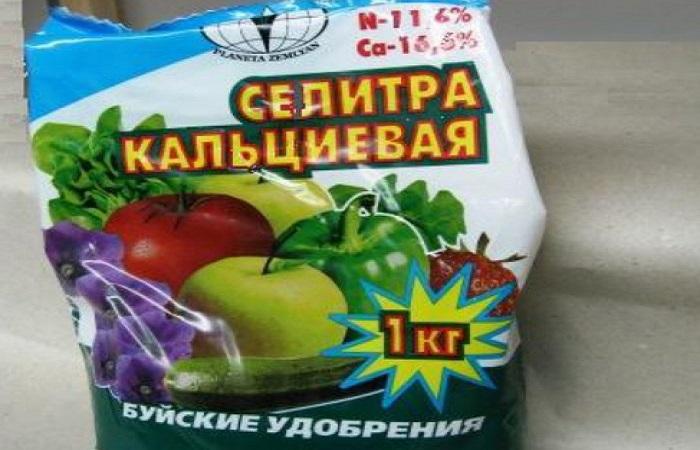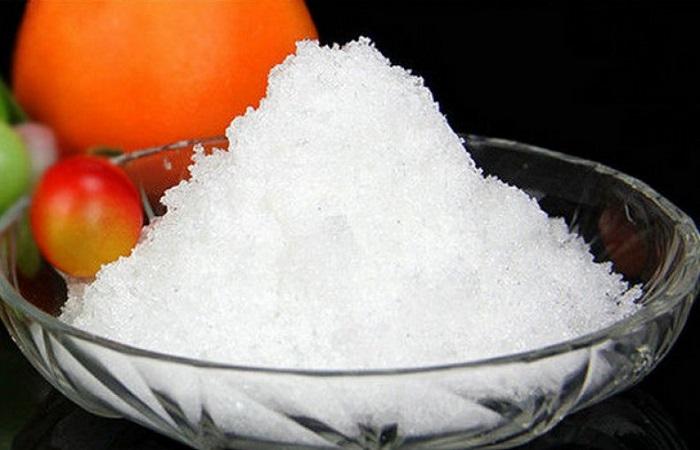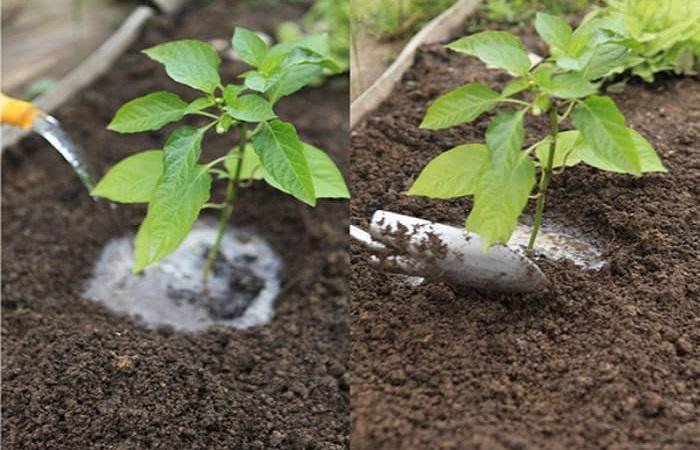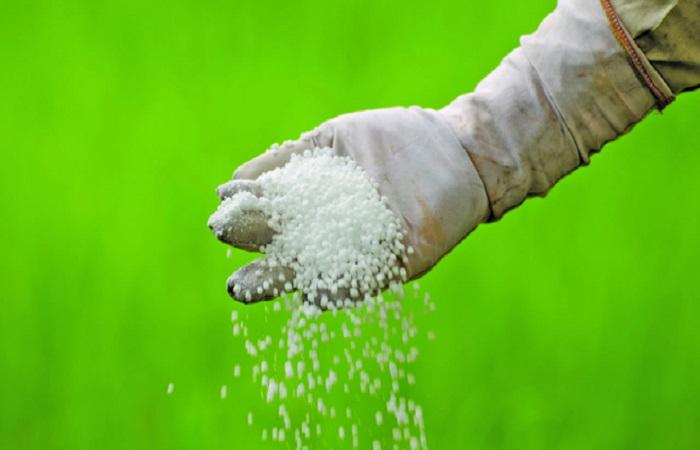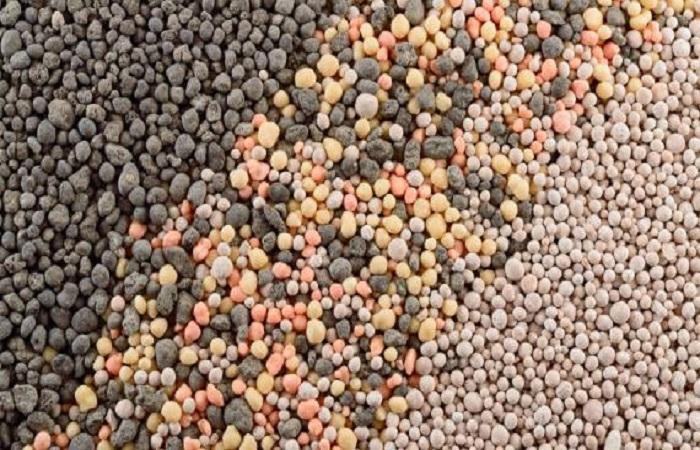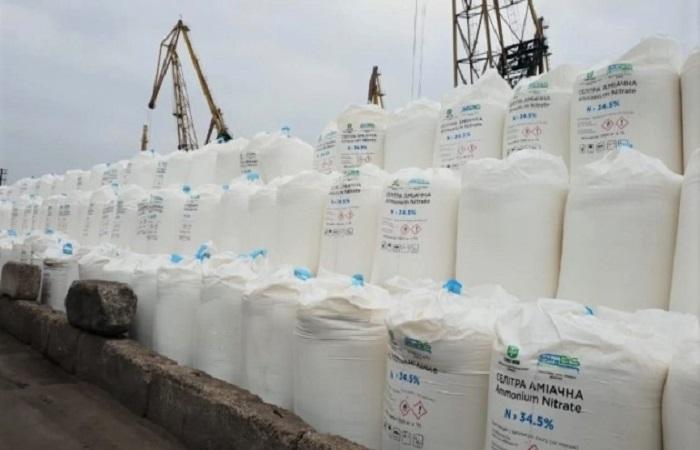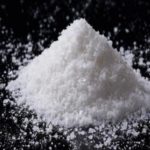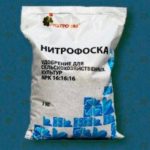Plants are demanding not only regarding the presence of nutrients and moisture in the soil. The acid-base balance of the soil is of great importance for vegetation, flowering and harvest. On acidic soils, the growth of most plants is inhibited, weak roots are formed, which leads to weakening of plantings and a decrease in yield. You can enhance plant growth and at the same time reduce soil acidity by adding calcium nitrate.
- What is it, properties
- What is it for?
- Advantages and disadvantages
- Instructions for use
- For seedlings
- For cucumbers
- For tomatoes and peppers
- For cabbage
- For strawberries and raspberries
- For flowers
- Precautionary measures
- Compatibility with other substances
- Storage periods and rules
- Which crops do not like calcium nitrate?
- Analogs
What is it, properties
Calcium nitrate, calcium nitrate or calcium nitrate is an inorganic salt of nitric acid used in agriculture as a fertilizer. It consists of the following components:
- Calcium – 19%.
- Nitrogen – 15.5%.
It is a white powdery or granular substance that has neither taste nor odor. Its chemical formula: CaN2O6.
Calcium nitrate is also called Norwegian saltpeter. The product is highly hygroscopic, making it highly soluble in water. Can be used as a dry fertilizer, an aqueous solution for irrigation and foliar feeding.
What is it for?
Since saltpeter contains an alkaline component - calcium - it is especially suitable for use as a fertilizer for acidic and slightly acidic soils. The presence of calcium gently neutralizes acidity, helping plants adapt to unsuitable soils.
In addition, the presence of calcium in the product promotes enhanced growth of the root system and strengthens the cellular structure of the plant. Calcified soil becomes less acidic after fertilization, resulting in more favorable conditions for plants to grow.
The presence of nitrogen in the preparation helps crops and seedlings to quickly “start” and gives them a supply of important nutrients for the formation of strong shoots and a powerful root system. Since nitrogen causes rapid growth, fertilizers based on it are applied in the spring, at the very beginning of the growing season, or a little later if the plantings are lagging in growth.
Advantages and disadvantages
Calcium nitrate has the following positive characteristics:
- Suitable for application to all types of soils, especially acidic and slightly acidic ones.
- It is a stimulator of spring growth of plants, including winter crops.
- Promotes the formation of a healthy, strong and well-developed root system.
- Helps plants adapt to unfavorable environmental changes.
- Improves the taste of the crop.
- Neutralizes high acidity of soils.
- The “calcium + nitrogen” pair helps mutual absorption by crops.
The disadvantage of fertilizer includes what is considered its advantage: the ability to change the acidity of the soil. Saltpeter cannot be used to fertilize plants that grow exclusively on acidic soils and have a negative attitude towards the presence of calcium in the soil and additives.
Instructions for use
Calcium nitrate can be added in the following ways:
- In dry form - for digging before sowing seeds, planting tubers, bulbs or seedlings.
- In the form of an aqueous solution - to enhance the growth of seedlings, seedlings and seedlings. Can be applied 2-3 times in the early stages of crop development. Also suitable for use in drip irrigation.
- Foliar feeding - for garden, ornamental, indoor and agricultural plants.
Each culture has its own requirements for the concentration of the solution or the amount of dry nitrate.
For seedlings
To feed seedlings, dissolve 10-15 grams of calcium nitrate in a liter of water, then dilute to obtain 10 liters of working fluid. Fertilizer is applied to moist soil to stimulate the growth of young plants and the expansion of root mass. Since nitrogen promotes the growth of green mass, fertilizers based on it are applied only in the early stages of development.
For cucumbers
If cucumbers are grown in nutritious soil in the garden, it is often enough to add a tablespoon of dry fertilizer to the soil when planting.Weak plants can be fed again with a liquid solution. Plants in closed ground need more nutrition, so foliar feeding is also used for them. It is better to treat them 2-3 times with a weak working solution of saltpeter than to overfeed them at one time. Such plants begin to “fatten”, that is, to increase green mass due to flowering and fruiting.
For tomatoes and peppers
Under each bush, pour one and a half tablespoons of granules into the hole, covering it with soil. If the seedling develops poorly or is stunted in growth, it is additionally fed 1-2 times by spraying with a weak solution of saltpeter. It is impossible to overfeed the plantings, as they will grow rapidly due to flowering and transition to fruiting, and for peppers and tomatoes, the formation of full-fledged fruits is the main task.
For cabbage
When planting cabbage, place a flat tablespoon of dry powder or granulate into the hole, cover it with soil and plant the plant. The roots should not come into contact with the fertilizer.
Cabbage vegetables do not tolerate acidified soils; the plants form a club of roots on them, they weaken and gradually die. Therefore, the use of calcium-containing fertilizers for these crops helps to improve the health of the plantings and obtain a strong, healthy and abundant harvest.
For strawberries and raspberries
Berry gardens are fertilized with a more concentrated fertilizer solution: 25-30 grams of saltpeter are diluted in a liter of water, then the volume is increased to 10 liters.
For flowers
Calcium nitrate is fed only to those flowers that prefer neutral, slightly alkaline and alkaline soil. Garden plants are watered with a solution of 10-15 grams of calcium nitrate per 10 liters of water at the rate of 1-1.5 liters of the finished mixture per square meter of area.
Precautionary measures
When working with calcium nitrate, the following precautions must be observed:
- Use personal protective equipment - overalls, goggles, mask or respirator, rubber gloves.
- Do not drink, eat or smoke during treatment.
- After finishing working with saltpeter, wash your hands with soap, wash and take a shower.
In case of contact with skin and mucous membranes, rinse with running water, if swallowed, induce vomiting and seek medical attention.
Compatibility with other substances
If necessary, calcium nitrate can be mixed with other nitrogen-containing fertilizers and chelated microelements, taking into account the plants’ need for this element. Calcium nitrate should not be combined in tank mixtures with preparations based on sulfur and phosphorus.
Storage periods and rules
Calcium nitrate can be stored for a long time, subject to the following rules:
- Stay in a dark, cool room with good ventilation.
- Closed, labeled packaging.
- Store separately from food, drinks, medicines and animal feed.
- Strangers, animals and children should not have access to the premises.
Calcium nitrate is hygroscopic, so the fertilizer must be protected from high humidity. The expiration date is indicated by the manufacturer on the packaging; the drug must be stored in its original container.
Which crops do not like calcium nitrate?
Calcium nitrate should not be used for plants that prefer acidic or slightly acidic soil, such as citrus fruits and most tropical indoor flowers. It is also undesirable to apply fertilizers containing calcium to conifers, hydrangeas, rhododendrons, lupins, roses, peonies, sunflowers and other garden and ornamental plants.
The use of calcium nitrate is limited due to the fact that it can reduce soil acidity, and this is undesirable for plants grown only in acidic soils.
Analogs
Since calcium nitrate consists of two components, the nitrogen component can be replaced by other nitrates, and calcium by chelate compounds of this element. There is no ready-made, complete analogue of calcium nitrate.

